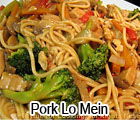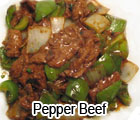
Eating between the main meals of the day may sound like a weak-willed dieter's fantasy, but in Canton it is a part of a dining tradition known as Yum Cha, or the “tea drinking”.
The tradition of Yum Cha is somewhat speculative, as are the histories of many social customs, but the drinking of tea itself is largely attributed to the mythological figure of Shen Nung (c. 3000 B.C.). He is the Chinese god of wind and patron of pharmacy.
Shen Nung collected hundreds of grasses and herbs to study for their medicinal properties, as well as toxicity. He tested them on himself, presumably in tea form. In doing so he is attributed the invention of tea. It wasn't until the Sung Dynasty (960-1280 A.D.) that tea drinking became popularized as something to drink for reasons other than sickness. At this point, tea became the brew for people to drink for enjoyment and relaxation, as well as health.
Yum Cha is also an occasion when families often gather to visit each other on the weekends, when everyone has time from their busy schedules. It may resemble, as a Chinese friend suggested, the Sunday brunch after church that is familiar to many religious Westerners. It is a time filled with catching up on what went on in each other's lives in the past week and what the family plans are for the near future. Many Yum Cha restaurants, in their relaxing atmosphere, share some similarities with contemporary Western cafe culture, replete with frequenters of a “chatty” bend. But they offer diners an experience well beyond the fare found at most bagel-slinging mocha-slurping coffeehouses.
Dim sum, roughly translated as “a little bit of heart” or “a little delicacy” is the edible counterpart of Yum Cha. Given the long history of Yum Cha and Dim Sum, it is not surprising that by one count, there are some two thousand items that make up the dim sum recipe canon. Of this vast repertoire, larger traditional Yum Cha restaurants often make as many as one hundred different dishes a day.
Yum Cha restaurants usually add their own home-spun favorites to the daily Yum Cha, so it is possible you may dine upon a local favorite not found outside the restaurant. Some of the larger restaurants serving Yum Cha offer two or three dining room choices, each with a different “cha wei” or tea and seat fee.
This is a one-time fee that covers all the tea you plan to drink during your visit. The cleaner the air, the higher the fare is usually the case, but one shouldn't pay more than 5 yuan for the most comfortable cushions in the house complete with clean air. The standard cha wei is 1-2 yuan per person.
Now that you've been given an introduction to Yum Cha, ask a friend if they want to go to Yum Cha (Heu M Heu Yum Cha). With points in mind, you'll blend in like a local. Enjoy.















 PREVIOUS
PREVIOUS